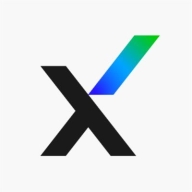

Trellix Active Response and Microsoft Defender XDR are leading contenders in the endpoint detection and response market. Users express greater satisfaction with the features of Microsoft Defender XDR despite its higher cost.
Features: Trellix Active Response is praised for its advanced threat detection capabilities, seamless integration with existing systems, and intuitive deployment. Microsoft Defender XDR stands out for its comprehensive protection across various platforms, integrated threat intelligence, and robust suite of features.
Room for Improvement: Users of Trellix Active Response suggest enhancements in automation capabilities, incident response times, and reporting tools. Feedback for Microsoft Defender XDR indicates a need for better reporting tools, improved scalability, and a more user-friendly interface. Microsoft Defender XDR's areas for improvement seem more critical to overall user experience compared to Trellix Active Response.
Ease of Deployment and Customer Service: Trellix Active Response is recognized for straightforward deployment and responsive customer service. Users report that Microsoft Defender XDR, while feature-rich, has a steeper learning curve and mixed reviews on support efficiency.
Pricing and ROI: Trellix Active Response offers competitive upfront costs and satisfactory ROI. Microsoft Defender XDR, although priced higher, is perceived as delivering greater ROI due to its extensive feature set. Despite Trellix Active Response being more budget-friendly, the comprehensive benefits of Microsoft Defender XDR justify its higher expense for many users.
We can quarantine and isolate a device within minutes.
Microsoft Defender XDR has saved me at least 50% of my time.
Ever since we turned on the M5 feature set back in June, we have seen a reduced number of potentially malicious clicks and faster alerting when incidents occur.
While we haven't yet quantified the financial benefits, we recognize that there has been a return on investment, particularly with operational efficiencies provided by the alerts.
You get stuck in low-level support for way longer than you should, instead of them escalating the issue up the chain.
It's critical to escalate SEV B issues immediately to a domestic engineer.
Once issues are escalated to the second or third layer, the support is much better.
I would rate technical support from Trellix Active Response as a seven because sometimes we face difficulties finding engineers quickly, leading to customer frustration.
Microsoft Defender XDR shows tremendous scalability, much more so than on-premises solutions.
Microsoft Defender XDR scales pretty well.
It is suitable for enterprise-level deployment but has room for improvement.
The scalability of Active Response is satisfactory.
The service has remained consistently online, with any issues isolated to specific components, suggesting a well-designed and modular architecture.
The services within our ecosystem have been reliable, meeting their SLAs.
It provides high-fidelity signals.
The licensing process needs improvement and clarification.
Improvements are needed in automated response capabilities.
Some inconsistencies exist between blades, which could be improved for a more seamless user and UI experience.
We would like Trellix to optimize the technology for these systems similarly to how it is deployed for normal endpoints.
There is room for improvement in the platform area and security area to make the dashboard visibility clearer and easier for customers to monitor malicious activities occurring in their environment.
There are certainly savings when using Microsoft Defender XDR, which can range from 30%, 40%, and even up to 50%.
I would rate the pricing as eight out of ten, indicating it is a reasonable cost for the product.
Microsoft purposefully obfuscates this through marketing ploys to hide costs.
Based on our evaluations, Trellix Active Response's pricing was the most feasible from a cost perspective.
With Microsoft threat intelligence information, it detects various types of threats, including insider attacks, malicious content, and data exfiltration.
This allows us to secure our systems in advance and proactively improve security, rather than waiting for incidents to occur.
Once we have it on the security dashboard, we can see a real-time storyline.
They notify us immediately of any vulnerabilities on the endpoints, allowing us to deploy a response quickly.
The most valuable feature of Trellix Active Response is that whenever any incident occurs, it allows us to disconnect from that particular network or area and shut down the system using commands.
| Product | Market Share (%) |
|---|---|
| Microsoft Defender XDR | 2.9% |
| Trellix Active Response | 0.3% |
| Other | 96.8% |


| Company Size | Count |
|---|---|
| Small Business | 46 |
| Midsize Enterprise | 23 |
| Large Enterprise | 37 |
Microsoft Defender XDR is a comprehensive security solution designed to protect against threats in the Microsoft 365 environment.
It offers robust security measures, comprehensive threat detection capabilities, and an efficient incident response system. With seamless integration with other Microsoft products and a user-friendly interface, it simplifies security management tasks.
Users have found it effective in detecting and preventing various types of attacks, such as phishing attempts, malware infections, and data breaches.
Watch the Microsoft demo video here: Microsoft Defender XDR demo video.
Continuous Visibility into Your Endpoints:
Capture and monitor events, files, host flows, process objects, context, and system state changes that may be indicators of attack or dormant attack components.
Identify and Remediate Breaches Faster:
Access tools you need to quickly correct security issues. Send intelligence to analytics, operations, and forensic teams.
Target Critical Threats:
Get preconfigured and customizable actions when triggered, so you can target and eliminate threats.
We monitor all Endpoint Detection and Response (EDR) reviews to prevent fraudulent reviews and keep review quality high. We do not post reviews by company employees or direct competitors. We validate each review for authenticity via cross-reference with LinkedIn, and personal follow-up with the reviewer when necessary.